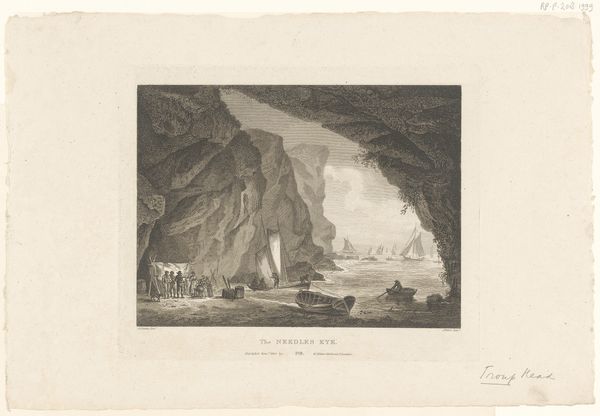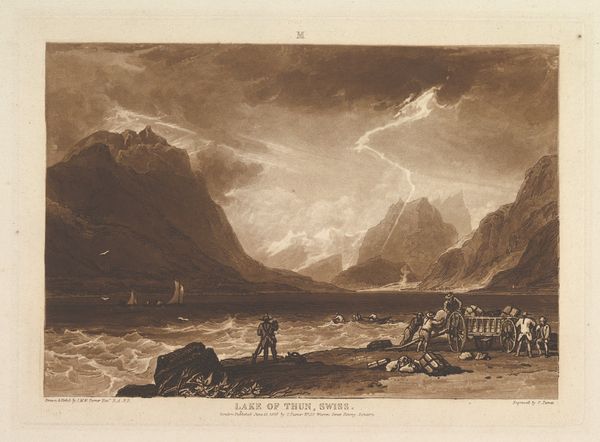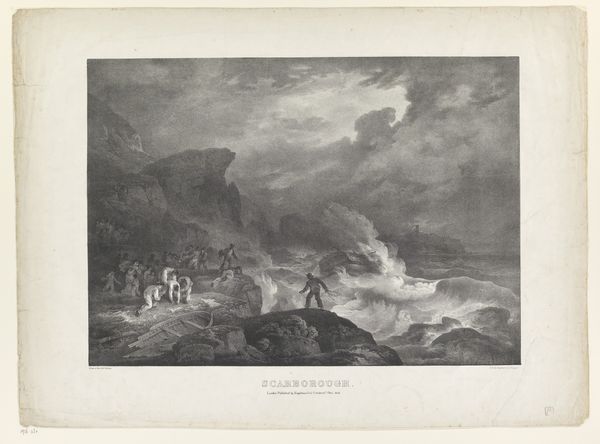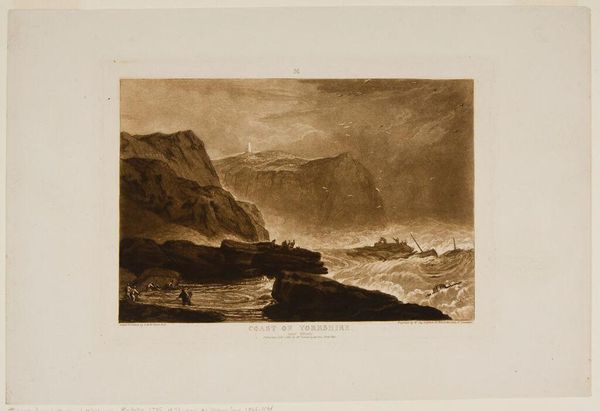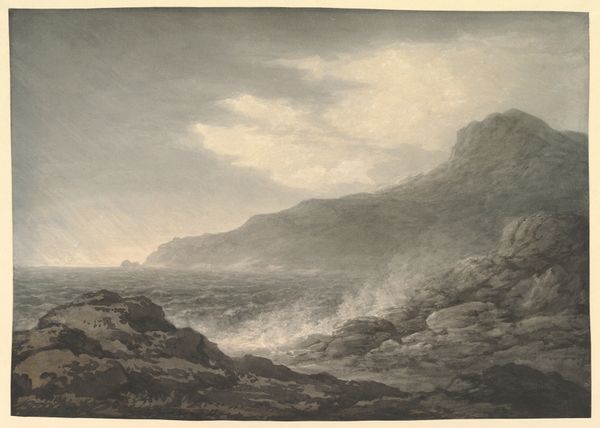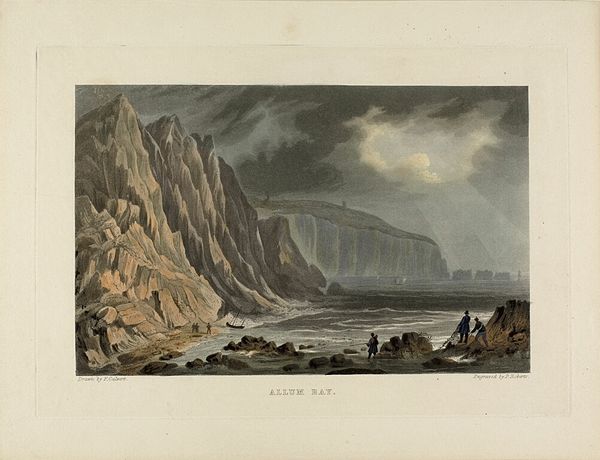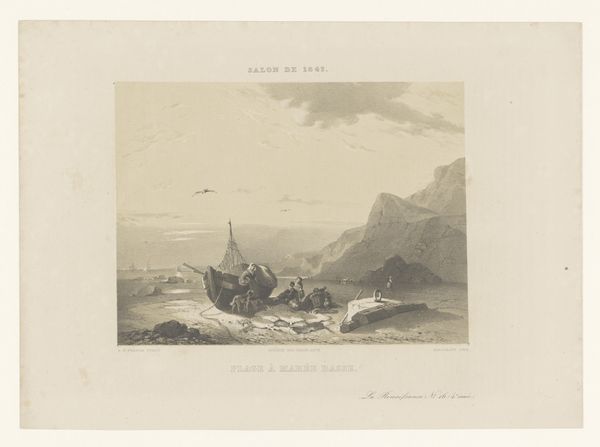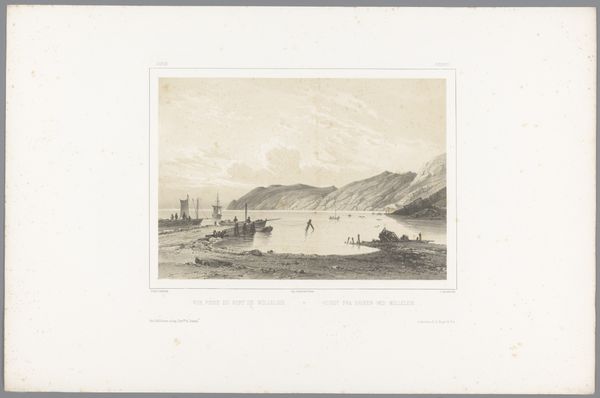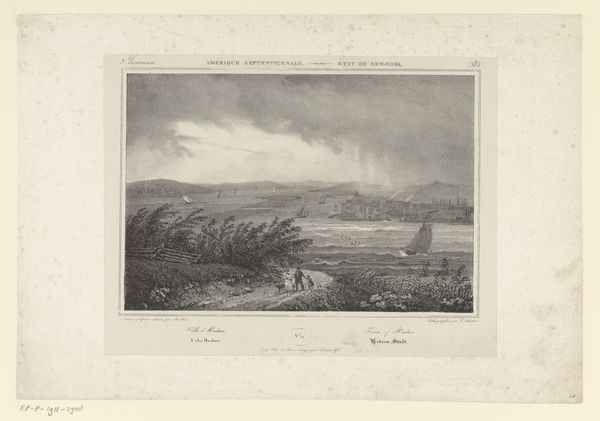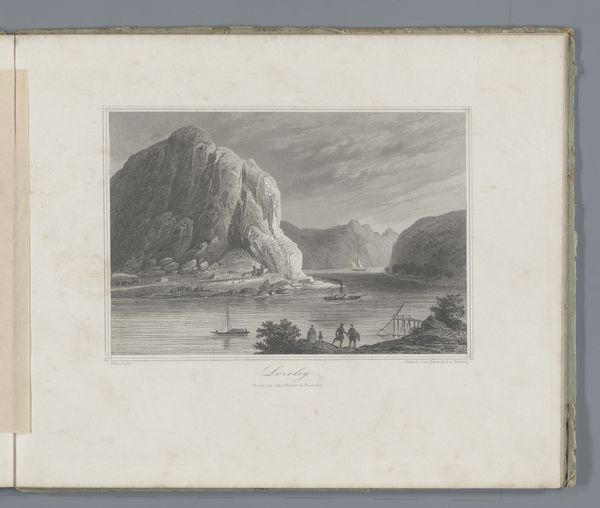
Coast of Yorkshire, Near Whitby (Liber Studiorum, part V, plate 24) 1811
0:00
0:00
drawing, print, etching
#
drawing
# print
#
etching
#
landscape
#
romanticism
#
history-painting
Dimensions: plate: 7 x 10 7/16 in. (17.8 x 26.5 cm) sheet: 8 1/4 x 11 1/2 in. (21 x 29.2 cm)
Copyright: Public Domain
Curator: We are looking at "Coast of Yorkshire, Near Whitby," a print created around 1811 by J.M.W. Turner, part of his *Liber Studiorum* series. He employed etching and mezzotint techniques to produce this striking image of the rugged Yorkshire coastline. Editor: My initial impression is drama. A churning sea, dark cliffs… and is that a shipwreck? There's definitely a sense of nature's power at play here. The sepia tones only heighten the feeling of something historic and perhaps tragic. Curator: The *Liber Studiorum* was conceived by Turner as a publication intended to offer accessible examples of landscape compositions, categorized into different thematic types. Turner was deeply engaged with making art accessible to a wide audience, thus democratizing artistic education in a way. This print is designated with an "M," suggesting it was classified as "Marine". It provided viewers with idealized forms for the historical or mythological landscape. Editor: The imagery of the sea—especially a tumultuous one—often symbolizes emotional upheaval or life's unpredictable journey. Are we supposed to interpret the distant tower as a beacon of hope or salvation amidst the chaos? There is also a tiny rowboat carrying a couple of persons seemingly attempting a rescue or gathering items on the shore. Curator: I believe Turner purposefully places the rowboat close to shore with a large number of people in that area so it represents a subtle critique of maritime trade. These seas were not romantic for most people because life was rough on the North Sea. We should consider the social implications. Whitby has long relied on fishing, whaling and shipbuilding for survival, making that specific shoreline critical in the everyday life for people from many cultures and locations. Editor: Yes, and the shipwreck and rowboat, these become symbols of humanity's vulnerability in the face of nature's power. We should also consider the birds flying overhead. There is this strange combination of hope, life and survival coexisting, intertwined in such an intricate dance, in an unforgiving landscape. Curator: It is important to acknowledge Turner's engagement with the picturesque, using etching to broaden his influence as a response to his reception at the Royal Academy. His distribution network made images like this a statement about art institutions and their role within early 19th century England. Editor: It’s fascinating how much depth there is, even in what appears to be a simple landscape print. The artwork presents an observation, a narrative, and then the viewer gets to extrapolate these elements with individual emotion, memory, or meaning, especially by considering the symbolic value behind such an imposing vision. Curator: Indeed, exploring the socio-political context, as well as symbolic components provides, I hope, a greater appreciation of both Turner’s technical accomplishment and his role in society at the time.
Comments
No comments
Be the first to comment and join the conversation on the ultimate creative platform.
